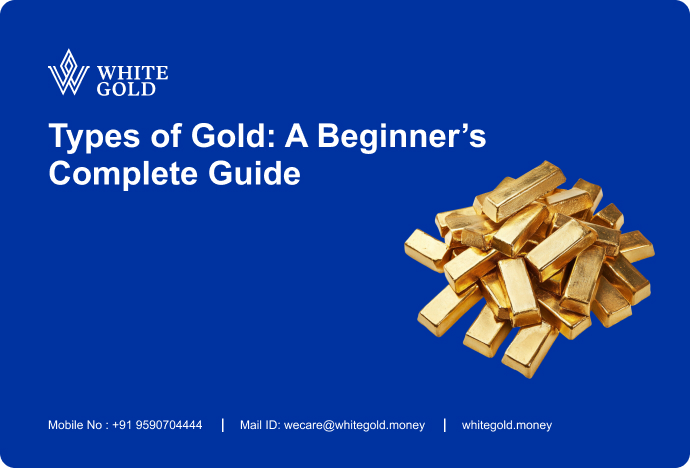4 Best Ways to Invest in Gold: An Intermediate Guide to Gold Investment

5min read

Gold has not just been the most valuable treasure for kings, throughout history, from being a trading currency and adorned jewellery to the best investment choice. Gold has evolved but still holds great prominence in every household. As financial markets evolve and uncertainties persist, investing in gold has emerged as a strategic choice for many investors. If you’re an intermediate investor looking to diversify your portfolio and harness the potential of gold, this guide offers you four of the best ways to invest in this precious metal.
1. Physical Gold
Investing in physical gold remains a classic approach that resonates with both traditional and modern investors. Physical gold can be acquired in various forms: gold bars, coins, and even jewellery. Each option comes with its advantages.
Gold Bars: These are available in various weights, making them ideal for investors with different budget constraints. However, storing larger gold bars can be a logistical challenge and may require secure storage facilities.
Gold Coins: Gold coins offer a blend of aesthetic appeal and intrinsic value. Coins from reputable mints often carry higher premiums due to their craftsmanship and limited minting. They also come in various denominations, catering to a wide range of investment sizes.
Gold Jewelry: While jewelry combines both investment and adornment, it’s important to factor in making charges and other associated costs. Additionally, selling jewellery might not yield the same investment returns as coins or bars due to added craftsmanship value.
2. Gold Exchange-Traded Funds (ETFs)
For investors seeking convenience and liquidity, gold ETFs provide a valuable solution. Owning gold ETF shares grants indirect ownership of physical gold held by the fund.
One of the primary advantages of gold ETFs is their accessibility. They allow investors to buy and sell fractional shares, eliminating the need for large capital investments. Moreover, ETFs spare you from concerns about storage and security associated with physical gold.
However, keep in mind that owning gold through ETFs means you won’t possess the actual physical metal. Additionally, there are management fees associated with ETFs that can impact your overall returns.
3. Gold Mining Stocks
Investing in gold mining stocks offers exposure to the potential gains of gold price appreciation as well as the operational success of mining companies. While it can be more complex than the aforementioned options, it provides diversification benefits by aligning with the overall performance of the mining industry.
Before investing in mining stocks, diligent research is crucial. Factors such as a company’s financial health, exploration projects, management expertise, and geopolitical considerations can greatly influence the stock’s performance. It’s important to note that gold mining stocks can be volatile and are influenced not only by the price of gold but also by company-specific dynamics.
4. Gold Futures and Options
For investors who are well-versed in derivatives trading and possess a higher risk tolerance, gold futures and options can offer speculative opportunities. These financial instruments allow you to speculate on the future price of gold without actually owning the metal.
Futures contracts obligate the investor to buy or sell gold at a predetermined price and date. Options, on the other hand, grant the investor the right (but not the obligation) to buy or sell gold at a specific price within a certain timeframe.
While these instruments can potentially yield significant returns, they come with substantial risks. The volatile nature of commodities markets and the complexity of derivatives trading mean that it’s crucial to thoroughly understand these investment tools before venturing into them.
Conclusion
Investing in gold can be a prudent move for those seeking to diversify their portfolios and hedge against economic uncertainties. As an intermediate investor, choosing the right method requires a thorough understanding of your risk tolerance, investment goals, and market dynamics.
Whether you opt for physical gold, gold ETFs, gold mining stocks, or derivatives like futures and options, each approach offers unique advantages and considerations. Balancing potential returns with associated risks is key to making informed investment decisions in the world of gold.
As you embark on your gold investment journey, remember to stay updated on market trends, conduct thorough research, and consider seeking guidance from financial advisors. By arming yourself with knowledge and making well-informed choices, you can harness the enduring allure and investment potential of gold to bolster your financial future.







